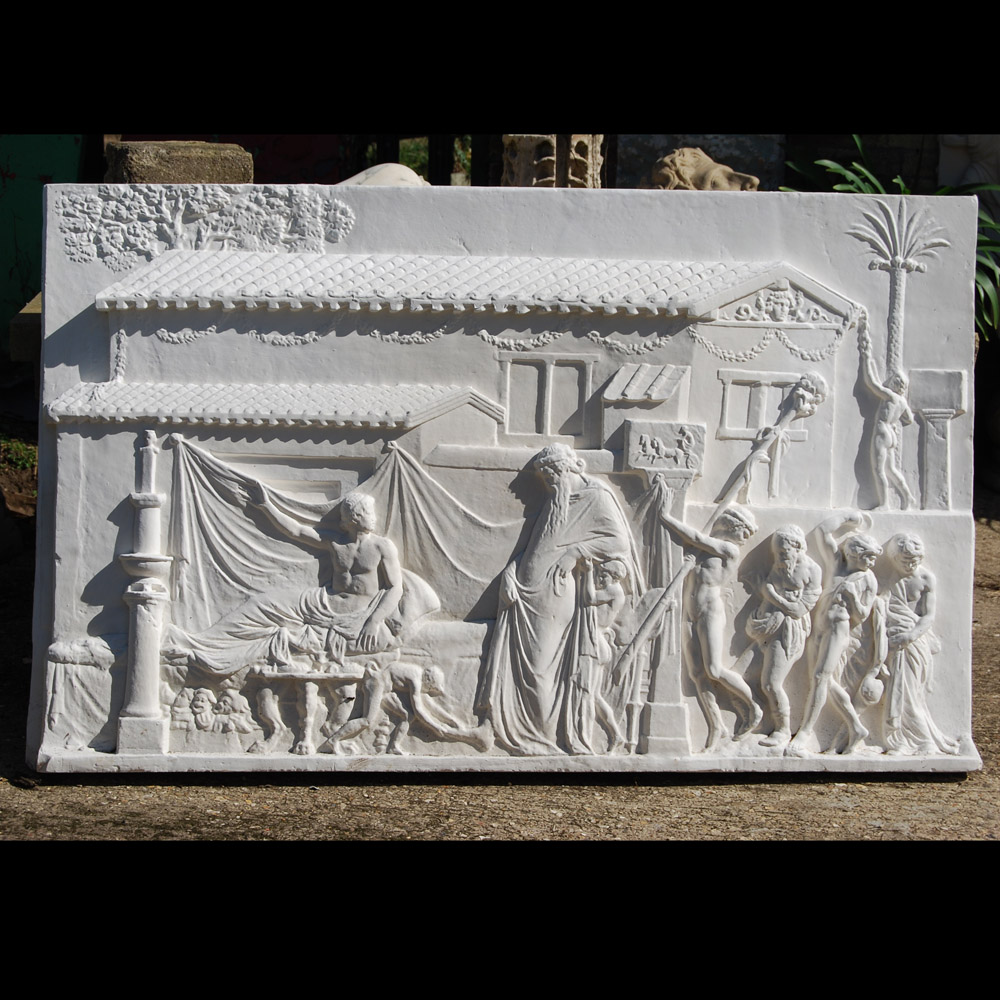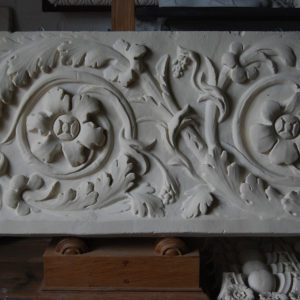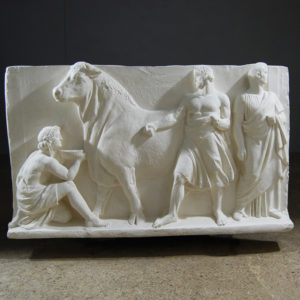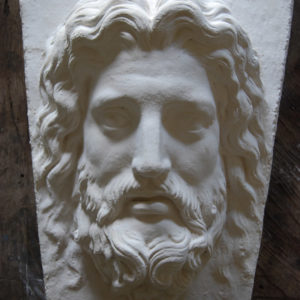No products in the basket.
‘Supper of Trimalchio’ or the visit of Dionysos and his companions to the house of a mortal.
Cast from the Roman original , 2nd Century A.D, now in The British Museum.
The original marble relief from which this cast is taken is dated by the British Museum as early 1st Century Roman and is a copy of an earlier 2nd Century BC Hellenistic Greek original.
Rediscovered in the early 16th Century it was first housed in the Casa Maffei before moving to the Villa Montalto, the palace of Pope Sixtus V, the great re-builder of Renaissance Rome.
It was purchased and brought to England by Charles Townley in the late 18th Century where Townley had it mounted above the fireplace of his library at No. 7 Park Street, Westminster, while his agents sought out a buyer. Townley was to describe it as the ‘Supper of Trimalchio’. It was eventually purchased by the British Museum in 1805 as part of what became known as the Townley Marbles.
Dominico Brucciani - formatore to the South Kensington Museum is thought to have been responsible for taking a cast of the plaque in the late 19th Century. LASSCO salvaged a Brucciani cast from a City of London building and from this we have made the present casting. A Brucciani casting can also be seen in the Ashmolean Museum cast collection in Oxford.
The scene depicts Bacchus and his retinue of Satyrs attending upon a mortal figure, possibly a poet, formerly identified as Ikarios (see Apollodorus, III.xiv.7). In the upper division appear a large temple of Bacchus and various other mystical representations.
The plaque is particularly noteworthy in being a rare depiction of Classical domestic architecture.
£1,275
In stock
Domenico Brucciani (1815-1880) was born in Lucca, Italy, moved to London as a young man, by at least 1837, and soon became a revered formatore – plaster-caster. His business built up special links with both the British Museum and the South Kensington Museum (later re-named The Victoria & Albert Museum).
His most substantial commission for the South Kensington Museum was the casting of the Pórtico de la Gloria, the 12th-century façade of the cathedral at Santiago de Compostela, in 1866. This huge undertaking – and many others including, famously, Trajan’s column itself – followed the agreement forged by Henry Cole and Prince Albert at the Paris Exposition of the previous year, signed by all the Crowned Princes of Europe, to further the common man’s experience of sculpture in-the-round by the reciprocal casting of great European sculpture. What followed was the Cast Courts at prestigious museums across Europe and beyond; Brucciani was foremost among the formatore.
He taught sculpture, moulding and casting at the Royal College of Art (including National Art Training School) from 1853 to 1861.
His company, “D Brucciani & Co.”, with workshops in Clerkenwell, survived its founder with the Covent Garden outlet still operating into Edwardian times. A catalogue of their wares is held at The National Art Library. However, by the turn of the century, the direct casting of priceless sculpture was becoming frowned upon; travel across Europe was now much easier anyway – the common man could now use the train. The company faltered. In the 1920’s its casting workshops were subsumed by the Victoria & Albert Museum.
LASSCO is delighted to have saved a number of the original piece-moulds. The making of piece-moulds – a plaster negative jigsaw enabling a cast to be released by the careful removal of the solid mould in pieces – is today a lost art; it has been rendered redundant by pliant silicons. We have duly made a silicon mould in order to preserve Brucciani’s work. The accuracy and detail of the resulting casts, taken as they are directly from the original is plain to see, and a delight.




